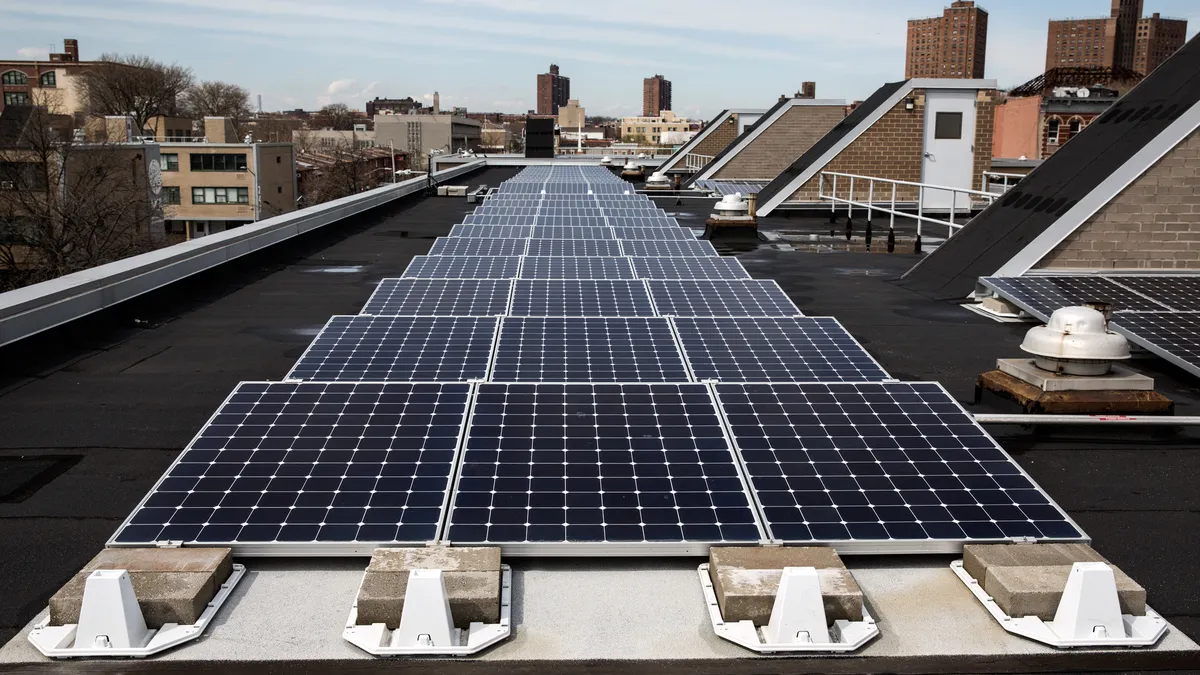Dive Brief:
-
A federal rule intended to lower barriers to distributed energy resources (DER) in wholesale markets still faces many questions about what DER aggregates will look like, how the new parties will interact with existing grid management, and what individual state roles might be.
-
The Federal Energy Regulatory Commission's Order 2222 doesn't limit participation in aggregating programs to particular business models and companies, speakers noted at a virtual session hosted last week by free market think-tank R Street Institute. A nonprofit could theoretically bring different DERs together, and the order might also open the door for Google or Apple to get involved in this space, something many experts have expected for the past decade, said Chris Villarreal, an associate fellow at R Street.
- As for what Order 2222 compliance will look like, it might take longer than expected to find out. For example, Villarreal said there is a "near 100% risk" that the Midcontinent Independent System Operator (MISO) will ask for an extension beyond the July 19 deadline to submit its compliance filing because of how little DER activity there is in the grid operator's region.
Dive Insight:
"For the most part, DER is seen as a problem" said Lorenzo Kristov, an independent consultant and former principal at the California Independent System Operator who spoke on the panel. The small power producers, storage companies, software providers and the like have historically been seen as a sort of regulatory inconvenience.
Order 2222 reframes these organizations and sets them on the path of becoming something else — key aspects of resilient infrastructure and even local economic drivers. Because the order forces localities to fit DERs into the power puzzle, "in that regard, it starts things moving in the right direction," Kristov said.
The FERC rule makes it easier for DERs to compete with larger power providers in the wholesale market, in part by allowing aggregations to operate together.
But making DERs a larger player also means new rules and conversations about how the newly-approved groupings can be assembled and interact with the rest of the grid.
To begin with, it's not clear what geographic restrictions DER aggregators will have, Villarreal said — how physically close to one another nodes will have to be. Villarreal thinks this conversation about what's technically possible could bring in some wild speculations, and pointed out that locational marginal pricing aggregates also require physical proximity. But the rules about borderlines aren't yet established, and Caitlin Marquis, a director at Advanced Energy Economy, a clean energy business association, said that's one detail her organization will be looking to hear more about from ISOs and RTOs.
Additionally, AEE will want to see that participation models allow a mix of technologies to make up a single aggregate and that distribution utility guidelines don't create barriers for DERs. AEE will also keep its eye on whether DERs will be permitted to participate in wholesale and retail transactions and what interconnection requirements will look like, Marquis said.
The order also emphasizes that the main market relationship will be between the DER aggregators and grid operators. Therefore, communication between the two groups will need to be ironed out, Kristov said. For example, power distribution layouts can be flexible. Cables, transformers and the like can change, and if capacity fluctuates, aggregators have to relay that information to ISOs and RTOs.
Order 2222 also pushes individual state utility commissions to develop more rules. Local protocols will determine how customer data is shared between DERs and utilities, how an aggregator can register to operate, what interconnections will look like for entities that have distributed generation or energy storage, and more, Villareal clarified via email after the event. The learning curve will be steepest for those state organizations with little experience in retail choice programs.
Adjusting to change will be the name of the game for many states for the coming years, Villarreal added. With DERs growing in popularity, states will need to reassess utility distribution plans to avoid making late and expensive alterations when, for example, there's suddenly an abundance of rooftop solar to incorporate














